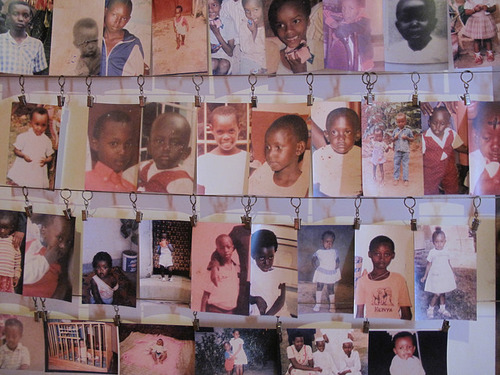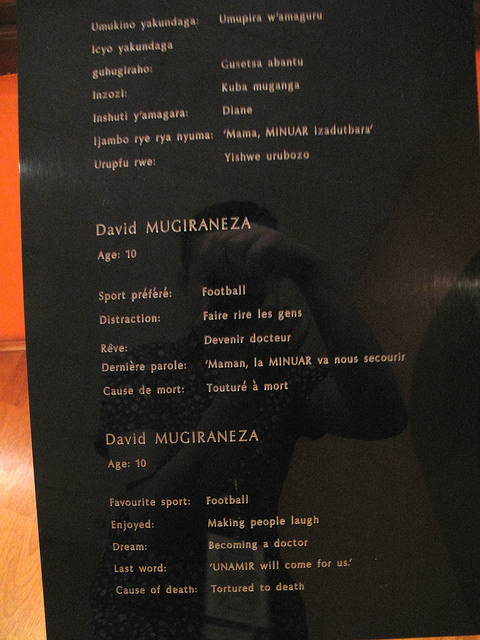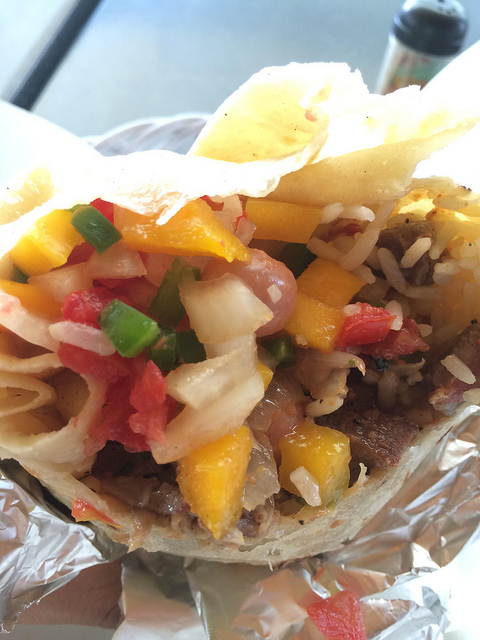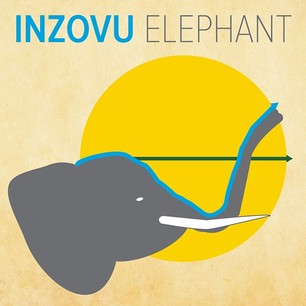Rwanda Reflections

Word Associations.
If I say “Rwanda,” the first thing most of you will say would be “genocide.” Or maybe the animal lovers and adventure travelers among you will say “gorillas” as a distant second.
Rwanda for me is haunting memories and unforgettable images, seared into my consciousness. Twenty years since the genocide. Two months since my trip there for UX for Good. Rwanda is still on my mind. My words can hardly express my thoughts and feelings, but allow me to offer some thoughts about my experience in the Land of a Thousand Hills.
So, how was Rwanda?
Awesome. Awful. Both.
Do these words even mean anything relation to the best and the worst of the human experience?
On one end, the trip of a lifetime and a life-affirming experience for a designer like me. On the other, the mass murder of a million people to the pain and suffering of those who survived. Twenty years have past, but deep scars remain.
Words fail again. I wish I could edit together a documentary video of my memories, but until that’s possible, I offer you a series of snapshots.
For me, Rwanda is:
Having the honor and privilege of meeting and working with the most amazing people, from my fellow UX for Good designers to colleagues working at the Kigali Genocide Memorial

Seeing the Memorial for the first time. Learning about how decades of hate bubbled over into a bloodbath. 100 days, almost 1 million people killed.
As John Petrie, our client and host, pointed out, it was not 1 million murders, but 1 murder of a human being with a family, with a story, followed by the murder of another human being with her own story, and another, until you get to a million.
A million. That’s half of Manhattan. Slaughtered over three months. Beaten with bats, slashed by machetes.

The blood and brains-encrusted wall of a former church Sunday school building, against which children were bludgeoned to death. A wooden spear used to rape and impale women and girls seeking refuge at the church. The overwhelming feeling and smell of death, even though twenty years have passed. All brutal reminders of mass murder burned forever in my memory.
Leaving the final room of the Kigali Memorial, the Children’s Room. Speechless.


The quiet dignity of the genocide survivors. The humility of heroes.
Attending Rwandan song/dance/percussion performance. And being invited to join in the dancing. The songs were pure energy, pure joy, pure life.
Goat Burrito with Mango Salsa and Habanero hot sauce at Meze Fresh.

Fried sambaza, small whole fish from Lake Kivu with just the right amount of salt and grease, enjoyed al fresco on a balmy evening, washed down with a cold Mütsig beer, accompanied by a panoramic view of Kigali and surrounded by the company of new friends: artists, activists, designers, dreamers.
Meeting Grace Uwamahoro and hearing her story. Grace was 10 years old in 1994, the year of the Genocide. While fleeing from the confusion with her family, Grace walked by a dying woman clutching to a baby. The dying woman implored Grace to take the baby. Grace did, and raised the baby, Vanessa, as her own sister/daughter. Vanessa is now a 20 year-old woman. The best of humanity in the worst of times.
Witnessing for myself a brief snapshot of the story of Rwanda’s rebirth.
First you have to die to be reborn.

“Inzovu” means “elephant” in Kinyarwanda. It’s our design response to what we saw and the stories we heard. It’s a framework and narrative strategy for moving visitors from the memorial from a state of empathy to compassionate action. It’s a way to turn a museum that memorializes genocide into a place that can help prevent genocide? How does it work? How can we test it?
More coming soon. Stay tuned.
What did we do in Rwanda?
Via UX for Good:
This year’s Annual Challenge will take place June 1st – 7th in Kigali, Rwanda and London, UK with Aegis Trust, the organization that established the Kigali Genocide Memorial on behalf of the Rwandan people in 2004.
Like genocide memorials around the world, this site produces powerful feelings in all who visit it. UX designers have a unique capacity to understand the steps that take place between emotion and action. In Kigali, we’ll ask them to apply that skill set on behalf of all humankind.
As part of the Annual Challenge, UX designers from across the globe will visit Kigali for several days of exploration, research and debate. Then the team will reconvene in London, where they’ll design an original way to translate the feelings evoked by genocide memorials into sustainable action. Finally, they’ll share their findings to leaders from Aegis and other advocates for human dignity.
In addition to a presentation to Aegis Trust, the findings will be publicly shared and be used as the starting point for a day-long virtual event in August. As part of that event, UX for Good will work together with experts and volunteers to refine the concepts developed and explore how they could be applied in many different contexts.
Designer Voices
Here are personal accounts from the trip by my UX for Good colleagues:

Find us on
eWgVM